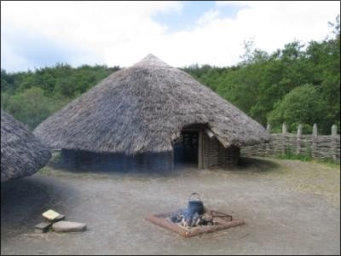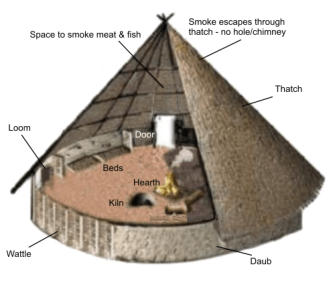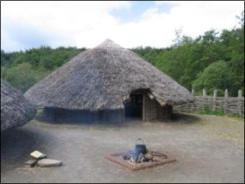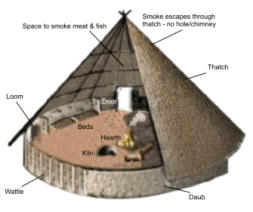



Gaelic life
Clan = Family
The family was the basic social unit of the Gaels. Membership of the family may be by birth, adoption (formal or otherwise), marriage or by any other arrangement agreed by both sides. A clan was a group of inter-related families, some by blood others by common interest. Thus the clan was, effectively, a (very) extended family. Names like “mac Donald” were not surnames. The example literally means “son of Donald”. Donald’s daughters would have been known as “nic Donald”. When surnames became the norm, “mac Donald” often became Macdonald, regardless of the gender of the person or the name of the person’s father. Many clansmen, although not directly related to the chief took the chief's surname as their own either to show solidarity, or to obtain basic protection or for much needed sustenance. Any group living within an area dominated by a clan could pledge allegiance to the chief of that clan and be accepted as clan members. The land occupied by the clan, belonged to the clan as a whole. It was held by the clan chief on behalf of the clan and he administered its distribution within the clan.Structure of the Clan
The hierarchy of the clan was military in style. At the top was the chief who was in position by consent of the clan and could be replaced at any time, if needed (see the Tanistry section under “Politics” for the details). Next was the “officer class” or tacksmen. The chief leased an area of land (a tack) to a tacksman on a long term basis. Military services were usually expected in return for the land. The third tier were the “soldiers” or small holders who worked land sublet to them by their tacksman. This structure looks similar to feudalism but the significant difference is that the land belonged, ultimately, to the clan, not to any one person in it and certainly not to the “High King” over all the clans. The area of land belonging to a tack was divided into arable land within the boundary walls of the tack, and grazing land outside the boundary walls. Grazing land was common grazing - it was held collectively by all the smallholder tenants of the tack. One third of the arable land was reallocated annually so that the arable land changed hands, or rotated, every three years. It was part of the way in which they ensured crop rotation, helping to maintain the soil. Because the whole structure was based around the family, the concept of family loyalty and group ownership of the land that they lived on, clansmen could always be relied upon to give military service to the chief when needed.

© Walter Jardine 2016


Novel





Gaelic life
Clan = Family
The family was the basic social unit of the Gaels. Membership of the family may be by birth, adoption (formal or otherwise), marriage or by any other arrangement agreed by both sides. A clan was a group of inter- related families, some by blood others by common interest. Thus the clan was, effectively, a (very) extended family. Names like “mac Donald” were not surnames. The example literally means “son of Donald”. Donald’s daughters would have been known as “nic Donald”. When surnames became the norm, “mac Donald” often became Macdonald, regardless of the gender of the person or the name of the person’s father. Many clansmen, although not directly related to the chief took the chief's surname as their own either to show solidarity, or to obtain basic protection or for much needed sustenance. Any group living within an area dominated by a clan could pledge allegiance to the chief of that clan and be accepted as clan members. The land occupied by the clan, belonged to the clan as a whole. It was held by the clan chief on behalf of the clan and he administered its distribution within the clan.Structure of the Clan
The hierarchy of the clan was military in style. At the top was the chief who was in position by consent of the clan and could be replaced at any time, if needed (see the Tanistry section under “Politics” for the details). Next was the “officer class” or tacksmen. The chief leased an area of land (a tack) to a tacksman on a long term basis. Military services were usually expected in return for the land. The third tier were the “soldiers” or small holders who worked land sublet to them by their tacksman. This structure looks similar to feudalism but the significant difference is that the land belonged, ultimately, to the clan, not to any one person in it and certainly not to the “High King” over all the clans. The area of land belonging to a tack was divided into arable land within the boundary walls of the tack, and grazing land outside the boundary walls. Grazing land was common grazing - it was held collectively by all the smallholder tenants of the tack. One third of the arable land was reallocated annually so that the arable land changed hands, or rotated, every three years. It was part of the way in which they ensured crop rotation, helping to maintain the soil. Because the whole structure was based around the family, the concept of family loyalty and group ownership of the land that they lived on, clansmen could always be relied upon to give military service to the chief when needed.





















